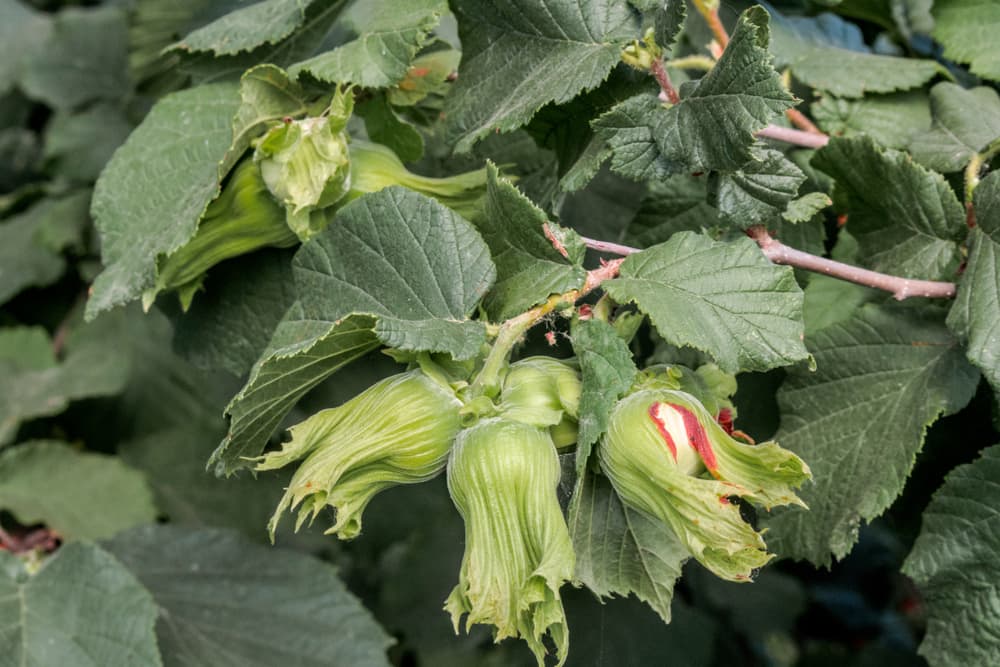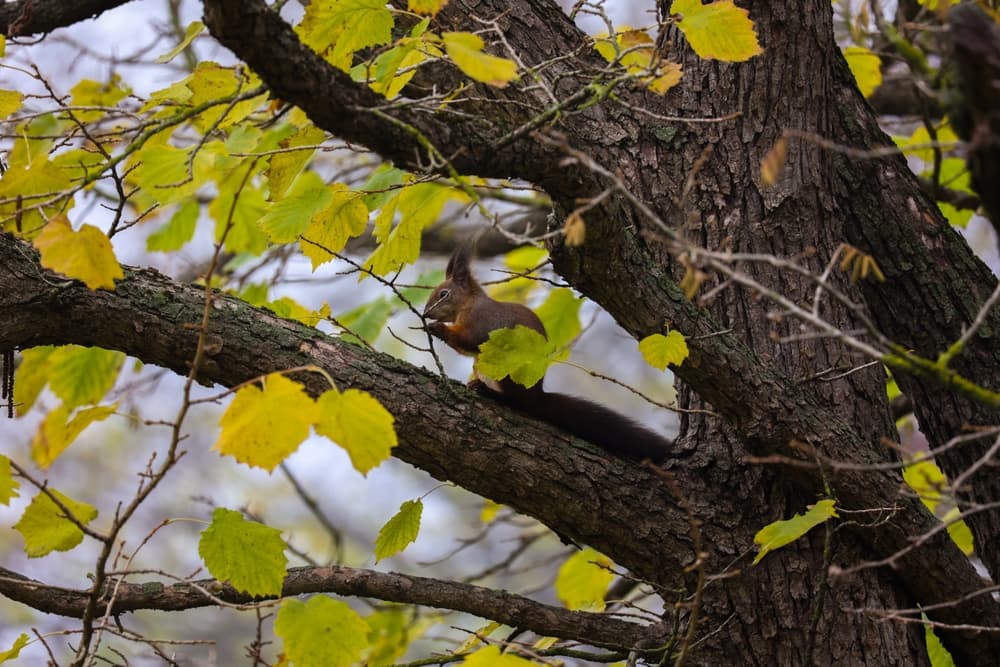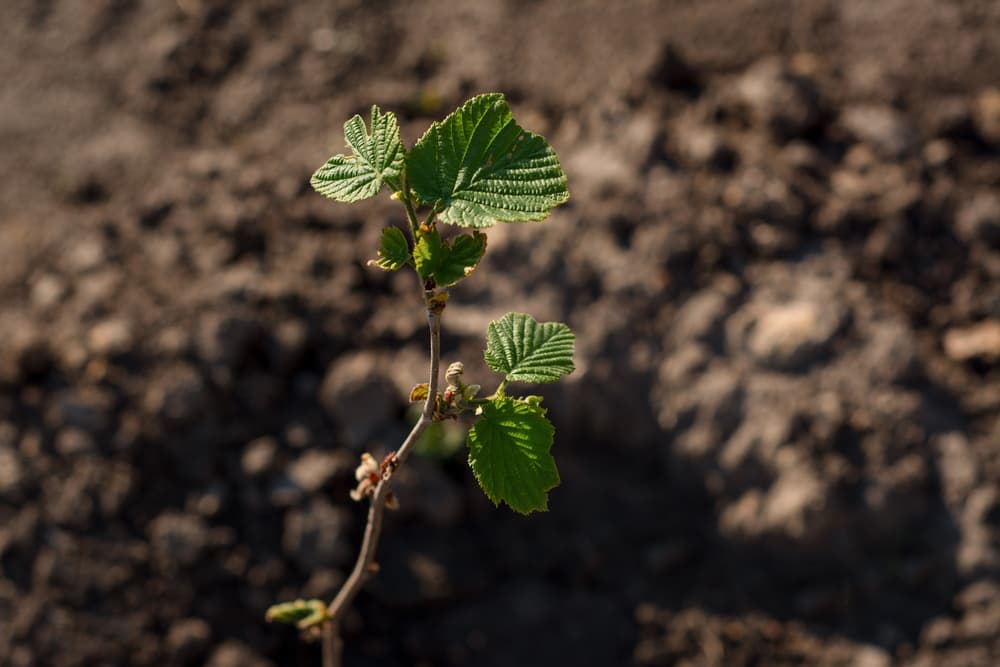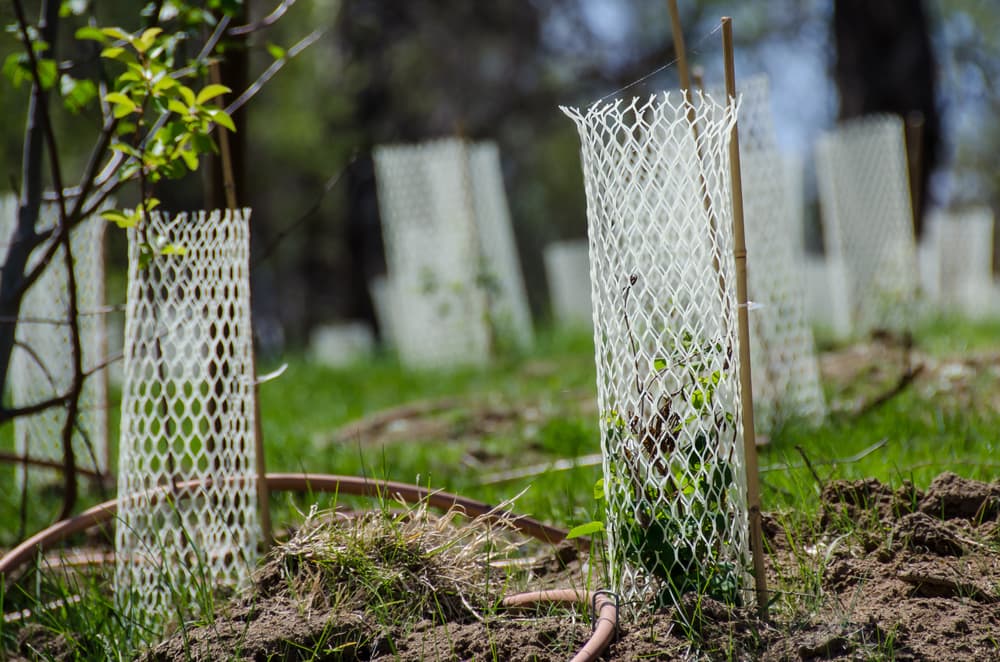Growing Hazelnut Tree – ‘If I Could Recommend Just One Native Tree, This Would Be It’

TREES > HAZELNUT

Elizabeth is a Permaculture Garden Designer, Sustainability Consultant and Professional Writer, working as an advocate for positive change. She graduated from the University of St. Andrews with an MA in English and Philosophy and obtained a Diploma in Applied Permaculture Design from the Permaculture Association.
Reviewed By COLIN SKELLY

Colin is a Horticulturist and Horticultural Consultant with experience in a range of practical and managerial roles across heritage, commercial and public horticulture. He holds the Royal Horticultural Society’s Master of Horticulture award and has a particular interest in horticultural ecology and naturalistic planting for habitat and climate resilience.
IN THIS GUIDE
HAZELNUT GUIDES
The hazelnut tree is one of the most useful and valuable nut-producing trees in the UK, and it can be a useful addition to many gardens.
If I could recommend just one tree for UK gardeners looking for trees with edible and useful yields, then I think that the hazel tree would be it.
Whether you are looking for a tree to use as an individual specimen tree, looking for a tree for coppicing, looking for lower canopy trees for forest gardens, or orchards – or even looking for trees to use in mixed native hedgerows – the hazel is an excellent choice.
It is one of our favourite native trees – for a range of reasons.
Overview
| Botanical Name | Corylus avellana |
| Common Name(s) | Hazel(nut) Tree; Common Hazel |
| Plant Type | Tree / Hedging |
| Native Area | Europe & W. Asia |
| Hardiness Rating | H6 |
| Foliage | Deciduous |
| Flowers | Dangling Catkins |
| When To Sow | January, February, March, November, December |
| Harvesting Months | September, October |
| Pruning Months | January, February, March, November, December |
Sunlight
Preferred
Full Sun or Dappled Shade
Exposure
Sheltered or Exposed
Size
Height
4 – 8M
Spread
4 – 8M
Bloom Time
Late Winter / Early Spring
Soil
Preferred
Chalk, loam, sand
Moisture
Moist but well-drained
pH
Alkaline or neutral
Our native hazel tree is Corylus avellana; the Common Hazel is native to all of Europe and even some of West Asia – stretching all the way to the Caucusus.1Corylus avellana. (n.d.). Kew Royal Botanic Gardens. Retrieved March 16, 2023, from https://powo.science.kew.org/taxon/urn:lsid:ipni.org:names:295446-1

It naturally grows in woods, especially on the slopes of hills, forming small trees up to around 6m high and 3m wide, though it can easily be kept much smaller when pruned and shaped as part of a wild hedgerow, or when used in a coppicing system.
This is an extremely hardy tree that can cope well with a wide range of conditions here in the UK.
Corylus maxima

Corylus maxima is another type of hazelnut tree that may be of interest.
It is a Hazel species with much in common with C. avellana – but generally produces more sizable nuts.
If growing hazel for edible nuts, therefore, hybrid types C. avellana x C. maxima can be good choices.
However, yields of both these edible nuts are usually better in more southern reaches of the British Isles than they are further north.
Corylus avellana ‘Contorta’
C. avellana ‘Contorta’ (corkscrew hazel) is another interesting option for your garden.

It is chosen for its ornamental twisting stems rather than its yield, but can be a good choice to consider if you are just looking for a small ornamental tree for your garden.
Why Grow Hazelnuts?
Hazelnuts are one of the very best perennial protein and oil crops for temperate climates.

If you are looking to branch out beyond traditional annual food cultivation and look into more sustainable, perennial food-producing options, then the hazel tree is an excellent option to consider.
Yields & Uses
Yields can vary, and wildlife can be a challenge – often getting to the nuts before you can, but if you want to grow nuts in the UK, hazels are one of the top trees to consider.
Hazel nuts are edible, of course, but can also be used in other ways – for example, the nuts can be rubbed on wood to release the oil and polish it.
The non-drying oil derived from the seeds is also used in paints and cosmetics.
Even if you are not looking to produce nuts in your garden, hazel trees can still be a very good choice.
Wildlife Benefits
The hazel is a wonderful, wildlife-friendly landscaping tree – attracting and supporting a wide range of native species.
This tree can be coppiced and so can be great in carbon gardening and long-term, sustainable garden systems.

If you have a vegetable garden, you will no doubt be able to find plenty of ways to use coppiced hazel in supporting your plants.
Hazel trees can also be very useful for native hedgerow schemes.
It works well in combination with other native species such as elder, blackthorn, hawthorn, native roses etc.
All hazel trees, however, have ornamental appeal – especially when they bear their dangling catkins in late winter or early spring.
How To Grow Hazelnut Trees
Hazels can grow in full sun or light, dappled shade.
They are H6 hardy and can grow across most of the British Isles.
Soil Requirements
Generally unfussy about their growing conditions, they will unfortunately not grow well in acidic soil, but can cope well in neutral, alkaline or even very alkaline soils.
They can thrive in most soil types, but will do best in a good quality loam, which is neither low in nutrients nor excessively high in fertility.

Yields are highest where the soils are neither particularly poor nor particularly rich.
In clay soils, the area should be amended with plenty of organic matter to improve drainage, since the hazelnut tree likes moist yet relatively free-draining conditions.
Exposure
Hazelnut trees can tolerate wind exposure, but will not typically thrive in a maritime location.
You can grow a hazel as a stand-alone tree, even in a smaller garden, while you can also consider growing it as an under-storey tree or coppice shrub in an existing woodland area or in a forest garden design.
As mentioned above, you can also use it in hedgerows.
Results (nut yields) will generally be best if you plant more than one hazel.
Planting
Like other trees, hazels are often bought as bare-root specimens which can be planted out over the dormant period.
However, hazels can withstand transplantation well, so you can also choose a mature specimen if you want to achieve a more established garden more quickly, and plant that out in spring or early autumn.

Hazels can also be grown from seed, though most home gardeners will find this a challenging proposition, and of course it will take a long time.
Hazels grown from seed are typically transplanted into their growing position when around 2 years old, then, for coppicing, left for 4 years or so before they are cut to the ground to encourage straight coppice stems to form.
Hazelnut Tree Care
Hazels will not typically require a lot of care, though young trees and shrubs should be well watered during dry periods until they are established.
Mulching
It is a good idea to mulch around a newly planted hazel tree with wood chip, bark, or other organic material.
Woody mulches will encourage a fungal soil environment, which can also help trees to become established.
Protection
It may also be a good idea to protect young trees from deer and other foragers with a wire cage or a tree protector in areas where they may be vulnerable.

If you want to collect the edible nuts then you may find it challenging to protect the tree from squirrels and other wildlife.
A fruit cage or other protection might be beneficial if you wish to grow nuts in any quantity.
Diversity will also help make sure there is plenty of other food around for foraging creatures – though of course won’t keep them away entirely.
Pruning / Coppicing
Pruning or coppicing hazel will depend on where and how exactly you wish your hazel to grow.
You can prune hazel lightly to keep it in shape, or largely leave it alone.

“In a small garden the largest stems can be pruned out in alternate years in spring once the catkins have dropped, keeping the plant size restricted,” says Horticulturist Colin Skelly, who has been certified in tree inspection by the Arboricultural Association.
“These stems can then be re-used as poles elsewhere in the garden,” advises Colin.
If growing it in a hedgerow, you can also leave it wilder or keep it more in check, or you can coppice hard in a regular coppicing system.
Cutting hazel to the ground every 5-10 years is typical, usually in spring after the catkins have dropped.
This will encourage the hazel to take on a more shrub-like form, with plenty of long, straight stems that you can use.
Harvesting Hazelnuts
Hazelnuts are harvested from September, as long as the wildlife has not gotten there first.
The nuts are ripe when the outer casing begins to turn yellow.
The nuts can be eaten raw, roasted, or used in a range of different ways.

You can store the nuts in their casing for up to around a year if you can keep them safe from mice and other pests.
But remember, even if you do not get any nuts, hazelnut trees can still provide a range of other yields and are very useful additions to your garden.
References
- 1Corylus avellana. (n.d.). Kew Royal Botanic Gardens. Retrieved March 16, 2023, from https://powo.science.kew.org/taxon/urn:lsid:ipni.org:names:295446-1
